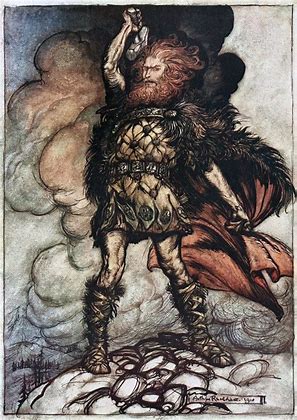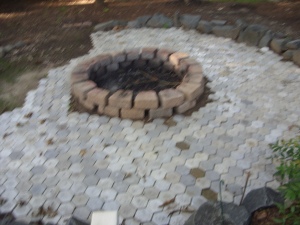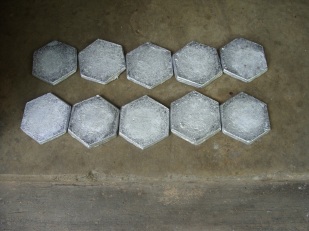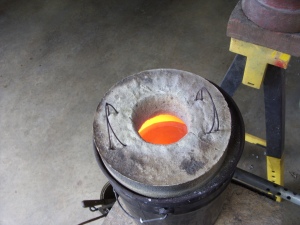I offer the following, as it was offered to me – for cogitation and contemplation. I have found no official corroboration, nor refutation. Christians who deny that their religion is not just a made-up one, can research this historical document, apparently composed and signed by Constantine, Roman Emperor and first, self-appointed Pope. 😯
A new consciousness of personal human dignity has emerged across our empire. Men feel the infinite value and responsibility of a new life. But within their realm of imposed happiness, a strange thing is occurring. As naturally as they have rejected the former political structure, men have begun to seek a religion of a more personal nature.
It is admitted that when in recent times the appearance of our Savior, Jesus Christ had become known to all men, there immediately made its appearance a new religion, not small, and not dwelling in some corner of the Earth, but indestructible and unconquerable, because it has assistance directly from God. This religion, thus suddenly appearing at the time appointed by the inscrutable counsel of God, is the one that has been honored by all with the name of Christ.
It is true that religion and civilization advance together. But it is equally true that religious creeds and practices can often lag behind civilization. We find that situation at present with the lingering of the pagan gods and the emergence of the new Christian faith. We find a further example of this with the new Christian faith fighting within itself, so many varied views as to what should or should not be believed. So many different ideas as to who and what is God and who and what is our Savior.
Any religion must reflect the pure ideals of the society in which it exists, its practices and sacrifices can only be as the general sentiment allows. No new religion can easily claim the soil where other gods have long been worshipped. To survive, a religion must have structure, rules, order, and, most important, consistency. The following mandates are offered as a means to protect that which we created:
Always remember that an Angry vengeful God is preferable to a benign, loving entity. We must Proclaim that Obedience and compliance with God’s directives is the only way to obtain eternal peace in heaven, while disobedience leads to everlasting suffering. The fear of that perpetual suffering should be used to keep the faithful under our control. The faithful can never forget that the only salvation from their fear comes from the Christian faith, its Doctrine and practices never open to question, their obedience absolute.
Sin is the mechanism whereby control will be enforced. For the Hebrew nation the Ten Commandments, which Moses first delivered, have long stood as their basic tenets. But we need more. A list of sins should be created, a list that adapts to the times, each sin designed to instill fear. There must be a clear belief that a failure to obtain forgiveness of sin places the immortal soul in the gravest of danger, with forgiveness obtained only through the Christian faith. This concept should begin at birth with the belief that all men are born into the world with sin. Never will they dwell with God unless there is absolution for this original sin through the Christian faith.
Many of the prior religions fostered a belief that when one lifetime ends another begins, the cycle never ending. This spiritual immortality, this reincarnation is surely comforting, but the Christian faith will offer only one physical life and One opportunity at eternal salvation. When that life ends the soul moves to either heaven or hell, both of which we must not only create but define.
Never can the failings of man be blamed on any lacking or deficiency in the Christian faith. Instead an adversary must be created. A diabolos, a spirit, a devil, who constantly poses challenges along the path to salvation. All of man’s sins and shortcomings must be blamed on this devil, who is always present, always tempting, never relenting, with the only resistance coming from Christian doctrine.
No spiritual abilities can ever be tolerated. Those who profess visions or an ability to speak with God are a danger. As treason is punishable by death, heretical thinking and acts must likewise know the wrath of God. Heretics can never be tolerated, their deaths a righteous calling, a warning to others that actions and thoughts contrary to the Christian faith come with dire consequences. Killing in the name of God is not a sin. Defending the faith with the spilling of blood is a duty we must never abandon. (Emphasis mine – lovely religion, this Christianity.)
Religion expresses itself in terms of the knowledge of the world in which it exists. If that be defective then religion likewise is defective. Never be afraid to change. It is the only way to survive. But never be too anxious to do so, either.
Sacred objects are those things that man must not use or touch because they belong only to God. Creating these, whether they be churches, places, people, words, or things, is essential to rooting our Christian faith. Keeping them sacred through rules and punishments is equally important.
Priests shall become a special class unto themselves. I am the natural choice to ultimately lead these priests, as religion is a vital part of politics. The first duty of the state is to stay right with God and keep God on good terms with the people. The priests’ duty is to keep the people on good terms with me.
Above all, the Essence of Christianity must be in loving God and following Him in faith, but it must also include upholding the authority of the Priests and believing in Christian doctrine without question. On this objective we must unite as the conduct of public affairs will be considerably eased if we take this step. Let us rejoice in unity.
Constantinus
Pontifex maximus
Nicea
ad 325













